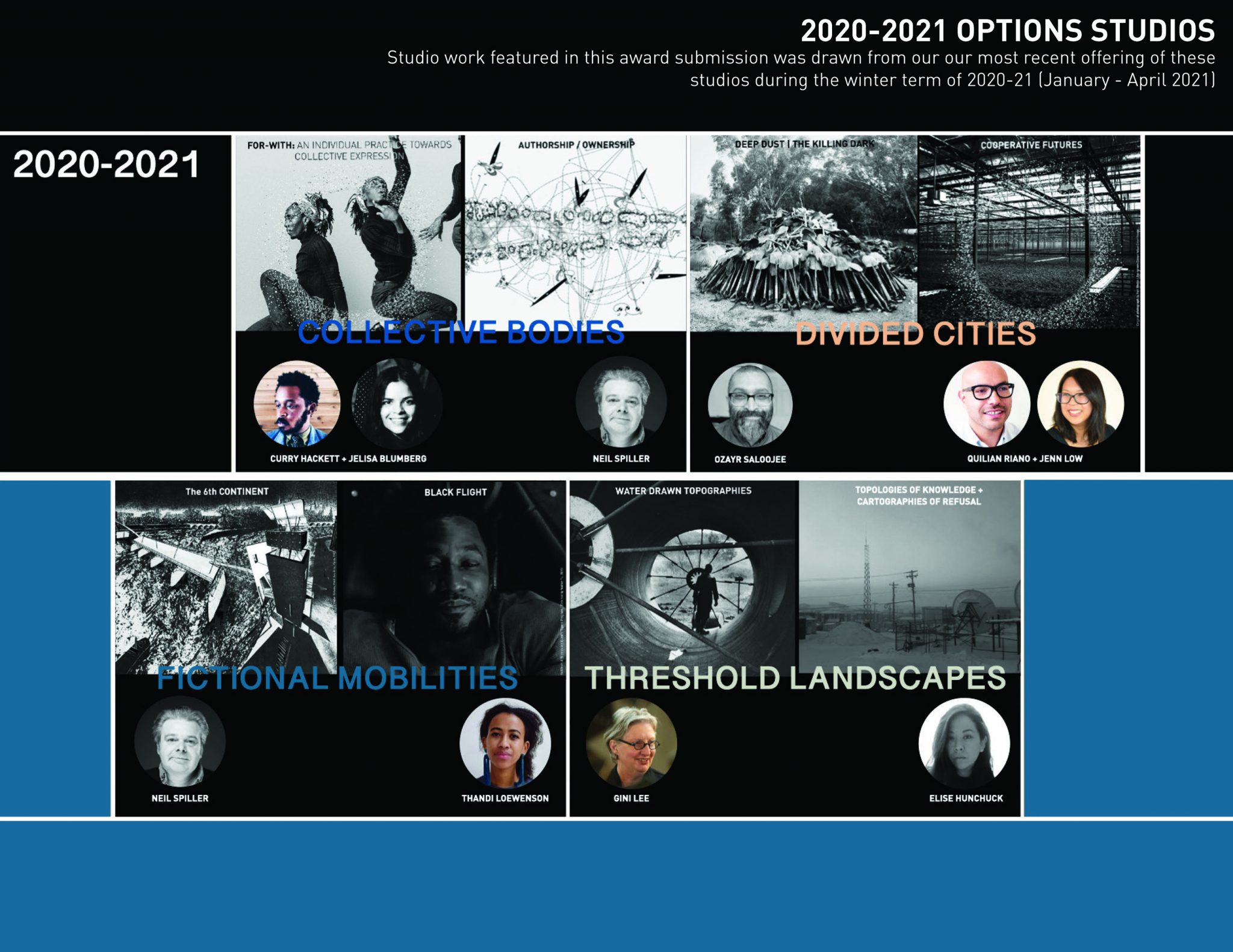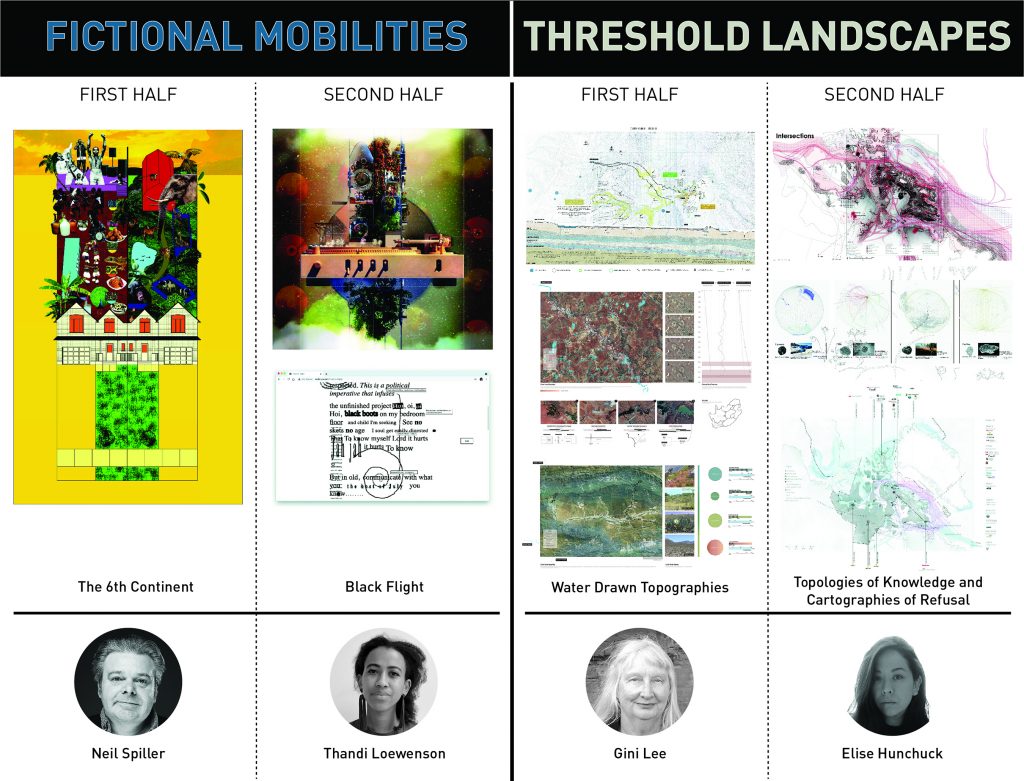Architectural Education Award recognizes Azrieli School’s MArch Options Studios
January 27, 2022
Associate Professor Ozayr Saloojee is the recipient of a Creative Achievement Award from the Association of Collegiate Schools of Architecture (ACSA) for a series of master’s studios that engage with “the urgency of our present world.”
The ACSA, which represents architecture schools across North America, announced its 2022 Architectural Education Awards on January 27, 2022.

The awards honour architectural educators for exemplary work in building design, community collaborations, scholarship, and service.
“The award-winning professors inspire and challenge students, contribute to the profession’s knowledge base, and extend their work beyond the borders of academia into practice and the public sector,” stated ACSA.
The Creative Achievement Award recognizes a specific creative achievement in teaching, design, scholarship, research, or service that advances architectural education.
Dr. Saloojee received the award for the 2021 Master of Architecture Winter Term Options Studios on behalf of the Master of Architecture program at Carleton University’s School of Architecture & Urbanism.
The studios focused on climate change, design politics, emancipatory spatial practices, landscape and urban ecologies, mega-projects and infrastructure, knowledge co-production, and conceptual making and thinking. They emphasize conceptual and critical thinking and advanced representation, and past modules have included travel to Cape Town, Madrid, Belgrade, London, Istanbul, Israel & Palestine, and Iglulik.
A unique component of the MArch Options Studios is the Azrieli Global Studio, which links a studio module on the Negev desert to another in Northern Canadian landscapes. The Negev Studio, generously supported by the Azrieli Foundation, allows students to travel with faculty to Israel as part of their coursework. This studio pairing (titled “Threshold Landscapes”) is one of the most popular and often oversubscribed options when students ballot for their studio choices.
“These Options Studios are both an architectural catalyst and a disciplinary expansion,” Saloojee wrote in his submission, titled Worthy Curricula: M.Arch Winter Term Options Studios.
The MArch Options Studios are designed as a series of paired, six-week studios, separated by the winter break in February. They serve as a bridge between the comprehensive building studio, which includes courses in advanced building systems and professional practice, and a year-long, student-driven thesis during the last year of the master’s program.
In Winter 2021, studio themes included Divided Cities, Threshold Landscapes, Collective Bodies, and Fictional Mobilities.
Visiting faculty are central to the studios. In a normal, non-COVID year, visiting faculty come to Ottawa and stay for six weeks, bringing new voices, interests, curiosities, and questions.
In 2021, the school hosted eight visiting faculty who taught through Zoom and used Figma as a virtual pin-up and conversation space. They were Neil Spiller (London), Jenn Low (Washington, Dark Matter University), Curry Hackett (Washington, Dark Matter University), Jelisa Blumberg (New York, Dark Matter University), Dr. Gini Lee (Melbourne, University of Melbourne), Quilian Riano (New York, Pratt Institute and Dark Matter University, and Dr. Thandi Loewenson (London, Royal College of Art).
The students produced a collective board game, a series of architectural and acoustic-playlists, deep sections, cartographies of refusal, collaborative community-engaged design work, and more.
The wide-ranging projects engaged with disciplinary questions of authorship, service, community, design, politics, climate, the agency of water, and refusal, all within the urgency of our present world.
Each year, a micro-symposium brings all instructors and students together to discuss work and ideas and think together through shared architectural themes and questions.
“These MArch Options Studios are a foundational component of our graduate program, linking the comprehensive building studio term just prior, to the year-long MArch thesis ahead,” said Saloojee.
“They open up the possibilities of how students might see, do, make, and think about architecture, and in turn about how we as faculty might think likewise about our teaching.”
As chair of the master’s program (2020-present) and associate director of graduate studies (2017-2020), Saloojee served as coordinator of the Options Studios.
He was part of an administrative team that included Jill Stoner (Director, 2015-2021), Federica Goffi (Interim Director, 2021-Present), and Zach Colbert (Associate Director of Graduate Programs, 2020-Present).
Members of the jury for the Creative Achievement Award were Mary Ben Bonham, Miami University, Antje Steinmuller, California College of the Arts, and Peter Waldman, University of Virginia.
Two programs in the United States also received a Creative Achievement Award. They are Dana Cupkova, of Carnegie Mellon University, for Architecture of Ecological Attunement: Environment Form Feedback, and Elgin Cleckley, of the University of Virginia, for _mpathic design: The Great Migration.

Collective Bodies
For/With: An Individual Practice Towards Collective Expression
Curry Hackett and Jelisa Blumberg, of Dark Matter University
This course examined and employed Black American modes of cultural production to discover unrecognized patterns and challenge traditions of ego and single-party authorship in the design professions. It looked at the urban streetscape, exploring the relationship between individual contribution and collective expression within the constructed environment.
Collective Bodies
Architectural Authorship
Neil Spiller, of London, England
Students were asked to select an artifact of their choosing: a poem, a picture, or an architecture, and operate on it in any way they choose to conceive of a new architectural work that pushed their own preoccupations to the limit and pushed them out of their preconceived architectural limits. This studio was predicated on the notion that 21st-century architecture is constituted by the relationship things have across space.
Divided Cities
Deep Dust / The Killing Dark
Dr. Ozayr Saloojee, Carleton University
Sited in Johannesburg, South Africa, this studio took the geological, elemental, and mineral (diamonds, gold, platinum) histories of Johannesburg’s “Elusive Metropolis” as a provocation to thoughtfully and curiously explore — through mapping, technical and narrative representation -—the spatial and social implications of an extractive terrain. It employed speculative drawing as a medium of conceptual and critical inquiry.
Divided Cities
Cooperative Futures
Quilian Riano and Jenn Low, Dark Matter University
The studio looked at community wealth-building and economic and housing cooperatives, such as Cleveland Owns, the Evergreen Cooperatives, and the Health Anchor Network, and provided a vision of what increased cooperation could look like spatially. The studio was sited in the Hough neighbourhood of Cleveland, OH.

Fictional Mobilities
The Sixth Continent
Neil Spiller, of London, England
Students worked individually to design an inhabited bridge on a site of their choosing, with real and VR components. The program was seemingly straightforward: the living and working space of an artist/personality of their choice and an architect of their choice. The interaction of these individuals informed the architecture of the bridge.
Fictional Mobilities
Black Flight
Dr. Thandi Loewenso, Royal College of Art, London, England
This studio considered black flight operating across a variety of scales: from the meso- and exosphere, in the worlds constructed through projects such as ATCQ’s Space Program or George Clinton’s Parliament-Funkadelic to the urban to the highly localized in order to devise forms of representation which are best suited to conjuring and communicating architectures of black flight.
Threshold Landscapes – Azrieli Global Studio
Water Drawn Topographies
Dr. Gini Lee, Melbourne Australia
This studio asked students to investigate novel water-drawn technologies and systems and their spatial and material relationships to micro-urban desert communities through mapping leading to working installations to reveal the qualities, properties, and dynamics of the sweet waters that sustain life in arid places.
Threshold Landscapes – Azrieli Global Studio
Topologies of Knowledge and Cartographies of Refusal
Elise Hunchuck, Royal College of Art and Bartlett, London, England
The studio prepared a set of maps of climate phenomena as shared by knowledge and information shared by the Inuit and their collaborators. With consent and collaboration, the studio worked with multiple forms and expressions of shared indigenous knowledge to interrogate Western science’s predilection of confining traditional ecological knowledge to the local.
About the ACSA
Founded in 1912 by 10 charter members, ACSA has grown to represent over 200 schools in several membership categories, including full membership for all accredited programs in the United States and government-sanctioned schools in Canada, candidate membership for schools seeking accreditation, and affiliate membership for schools with two-year and international programs. Through these schools, over 6,000 architecture faculty are represented. The association maintains a variety of activities that influence, communicate, and record important issues, including journals, scholarly meetings, awards and competition programs, support for architectural research, policy development, and liaison with allied organizations. www.acsa-arch.org